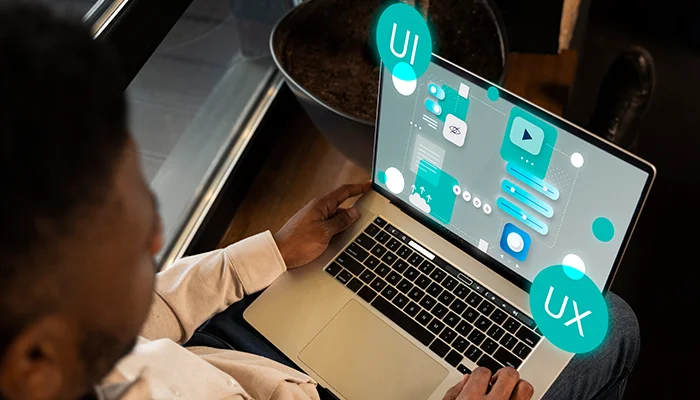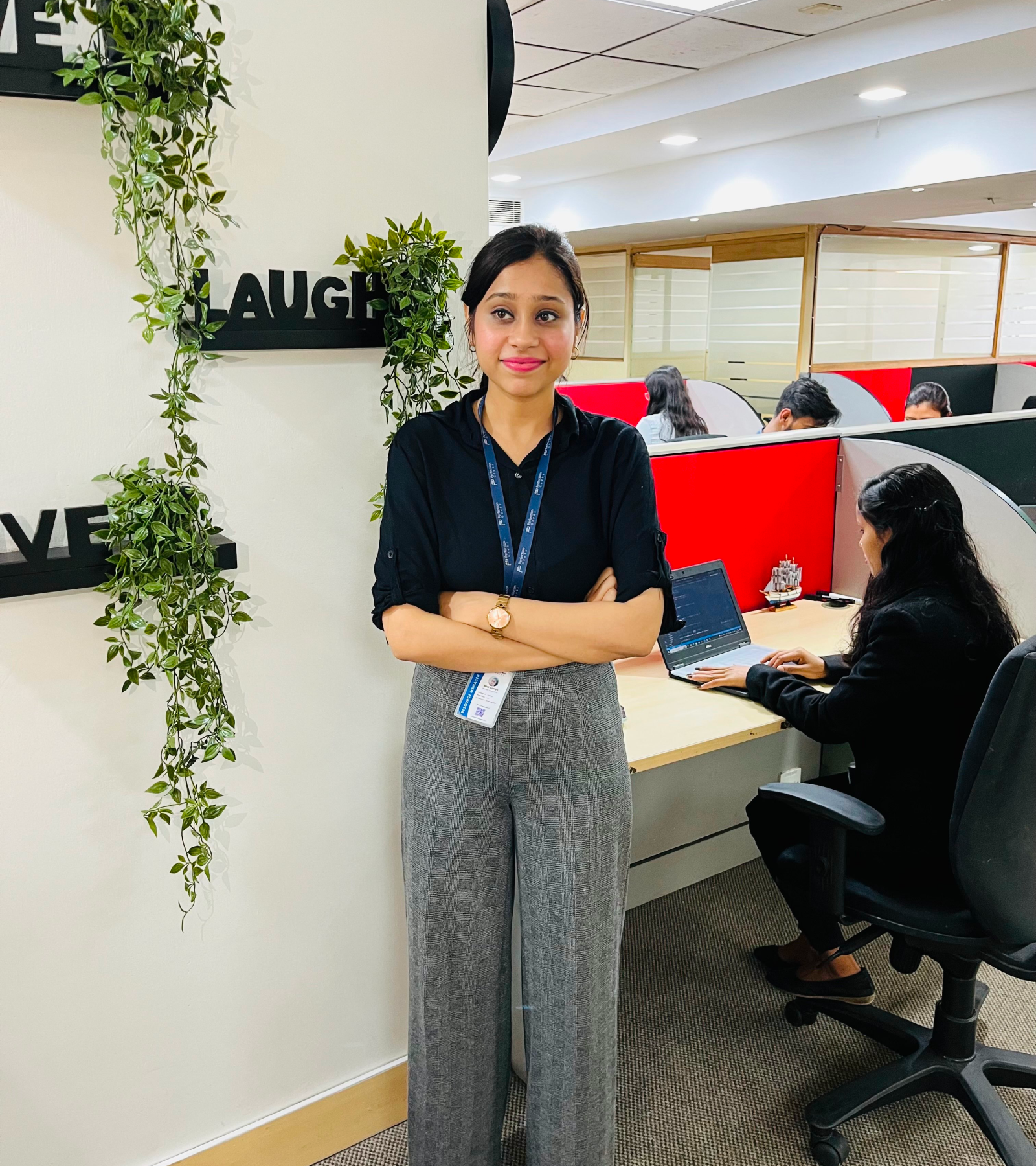How do I build an ADA- and WCAG-Compliant Application?

JUN, 21, 2024 17:35 PM
How do I build an ADA- and WCAG-Compliant Application?
In today's digital age, ensuring accessibility for all users is not just a best practice; it's a legal requirement. When it comes to mobile applications, adhering to the Americans with Disabilities Act (ADA) and the Web Content Accessibility Guidelines (WCAG) is crucial. Building an ADA and WCAG-compliant mobile application not only opens up your app to a wider audience but also demonstrates your commitment to inclusivity and social responsibility. In this comprehensive guide, we'll explore the steps you need to take to create a mobile app that meets these essential accessibility standards.
Understanding the ADA and WCAG
The ADA, passed in 1990, prohibits discrimination against individuals with disabilities in all areas of public life, including jobs, schools, transportation, and all public and private places that are open to the general public. This includes digital spaces like websites and mobile applications. WCAG, on the other hand, provides guidelines for making web content more accessible to people with disabilities. It's the international standard for web accessibility, offering a set of recommendations for making web content accessible, primarily aimed at web developers.
The importance of accessibility in mobile apps
Mobile devices have become an integral part of our daily lives, and mobile applications serve various purposes, from entertainment to essential services. Ensuring that mobile apps are accessible to everyone, regardless of their abilities, is imperative. Not only does it comply with legal requirements, but it also provides a better user experience for all users, regardless of their disabilities. Accessibility features also improve usability for users in various contexts, such as in noisy environments or bright sunlight.
Key Principles of ADA and WCAG Compliance
Before diving into the technical aspects, it's essential to understand the key principles of ADA and WCAG compliance. The four core principles of WCAG are often referred to as POUR:
- Perceivable: This principle emphasizes the importance of making information and user interface components perceivable to all users, including those with disabilities. In practical terms, it means ensuring that content is presented in ways that users can perceive, regardless of their sensory abilities. For example, providing alternative text for images allows users with visual impairments to understand the content of an image, while captions and transcripts for multimedia content make it accessible to users who are deaf or hard of hearing. Perceivability also extends to ensuring that text and other elements have sufficient contrast, making them readable for users with low vision.
- Operable: The operability principle focuses on making user interface components and navigation operable for all users. It ensures that users can interact with the application effectively, regardless of their abilities. This includes providing keyboard navigation options for users who cannot use a mouse and ensuring that all interactive elements are easily accessible and usable through keyboard controls. Moreover, it involves ensuring that users have enough time to read and use content and that any time limits are adjustable or can be extended, catering to users who may require more time to interact with the app due to disabilities.
- Understandable: Information and the operation of the user interface must be understandable. This principle highlights the importance of ensuring that users can comprehend the content and functionality of the application. To achieve this, it's crucial to use clear and concise language, provide instructions and labels that are easy to understand, and maintain a logical and consistent layout throughout the application. Making error messages clear and suggestions for resolving errors available helps users understand and recover from errors. This principle ensures that the app's interface is intuitive and straightforward, benefiting all users, including those with cognitive or learning disabilities.
- Robust: Content must be robust enough that it can be interpreted reliably by a wide variety of user agents, including assistive technologies. The robustness principle ensures that the application can adapt and be interpreted consistently by different user agents, browsers, and assistive technologies. This involves using coding practices that are compatible with various platforms and devices, adhering to web standards, and avoiding reliance on specific technologies that may not be universally supported. By ensuring the robustness of the application, you guarantee that users, regardless of their choice of assistive technology or device, can access and interact with the app effectively.
Understanding and adhering to these key principles of ADA and WCAG compliance is fundamental to creating a mobile application that is accessible to all users, regardless of their abilities. By incorporating these principles into the design and development process, you can ensure that your mobile app provides an inclusive and equitable user experience for everyone.
Steps to Build an ADA and WCAG-Compliant Mobile Application
Building an ADA- and WCAG-compliant mobile application requires a structured approach that integrates accessibility into every stage of the development process. Let's delve into each step in depth to understand how to effectively create a mobile app that meets these critical accessibility standards:
1. Conduct accessibility training.
Ensuring that your development team is well-versed in accessibility standards and best practices is the foundational step towards building an ADA and WCAG-compliant mobile application. Conducting comprehensive training sessions to familiarize developers, designers, and testers with ADA and WCAG guidelines is crucial. Here's why:
- Understanding Accessibility Principles: Developers need to grasp the fundamental principles of accessibility, including the four core principles of WCAG: perceivable, operable, understandable, and robust (POUR).
- Integration into the Development Process: Training helps in seamlessly integrating accessibility considerations into the development process from the outset, rather than treating it as an afterthought.
- Awareness of Assistive Technologies: Familiarity with various assistive technologies empowers developers to anticipate the needs of users with disabilities and design the app accordingly.
2. Design with accessibility in mind.
Accessibility should be a primary consideration in the initial stages of the design process. Here are some key design considerations to ensure that your mobile app is accessible to all users:
- Color Contrast: Ensure that text and graphical elements have sufficient contrast to be easily readable by users with low vision. Following WCAG guidelines for color contrast ratios is essential to ensuring readability for users with varying degrees of visual impairment.
- Font Size and Type: Use scalable fonts and allow users to adjust font sizes within the app. This flexibility is particularly important for users with low vision, who may require larger text sizes for readability.
- UI Elements: Make sure that interactive elements, such as buttons and links, are large enough and properly labeled. This helps users with motor impairments or dexterity issues easily interact with the app.
- Navigation: Design an intuitive and straightforward navigation flow that is easy to understand and operate. Clear navigation pathways enhance usability for all users and are particularly beneficial for users with cognitive disabilities who may struggle with complex navigation structures.
3. Implement accessible user interface (UI) components.
When developing the app, focus on using accessible UI components and practices to ensure that all users can interact with the application effectively. Here's how:
- Semantic HTML: Use semantic HTML5 elements for better structure and accessibility. Semantic markup not only enhances the readability of the code but also provides valuable context for assistive technologies.
- Alt Text for Images: Provide descriptive alt text for all images to ensure that users with visual impairments can understand the content. Alt text serves as a textual alternative to images, making visual content accessible to screen reader users.
- Focus Management: Ensure that users can navigate through the app using keyboard controls and that the focus order follows the logical flow of the application. Proper focus management is essential for users who rely on keyboard navigation or switch devices.
- Labeling Form Fields: Properly label all form fields and provide clear instructions. Labeling form fields accurately and associating them with their respective input elements improves accessibility and usability for all users, especially those using screen readers or voice input.
4. Test for accessibility.

Regular and rigorous testing for accessibility issues throughout the development process is vital to ensuring that your mobile application meets ADA and WCAG compliance standards. Here's how you can effectively test for accessibility:
- Automated Accessibility Testing: Utilize automated accessibility testing tools to identify common accessibility issues. Tools like Google's Accessibility Scanner and the WAVE Web Accessibility Evaluation Tool can quickly scan your app for accessibility issues and provide actionable insights.
- Manual Accessibility Testing: Conduct manual accessibility testing to identify issues that may not be caught by automated tools. This involves using assistive technologies such as screen readers (e.g., VoiceOver for iOS, TalkBack for Android) to navigate through the app and identify any accessibility barriers.
5. Provide alternative content and features.
Offering alternative content and features is essential to accommodate users with disabilities and ensure that they can access and interact with your mobile application effectively. Here are some key considerations:
- Text Alternatives: Provide text alternatives for non-text content, such as images and videos. Descriptive alternative text (alt text) allows users with visual impairments to understand the content conveyed by images.
- Captioning and Transcripts: Include captions for videos and provide transcripts for audio content. Captions and transcripts make multimedia content accessible to users who are deaf or hard of hearing.
- Alternative Input Methods: Allow users to navigate and interact with the app using alternative input methods, such as voice commands or gestures. Providing multiple input methods ensures that users with mobility impairments or other disabilities can effectively interact with the app.
6. Ensure compatibility with assistive technologies.
Testing your mobile application's compatibility with various assistive technologies is crucial to ensuring that users can effectively interact with your app using these tools. Here's how you can ensure compatibility:
- Screen Readers: Test your app with popular screen readers such as VoiceOver for iOS and TalkBack for Android to ensure that all app content and functionality are accessible to users who rely on screen readers.
- Magnifiers: Verify that the app's content remains legible and usable when zoomed in using built-in magnification features on mobile devices.
- Speech Recognition Software: Ensure that users can effectively interact with the app using speech recognition software by testing voice input functionality and ensuring that all app actions and commands are accessible via voice.
7. Consider platform-specific guidelines.
While WCAG provides comprehensive guidelines for web accessibility, it's also essential to consider platform-specific guidelines for mobile applications. Both iOS and Android platforms have their own accessibility guidelines:
- iOS Accessibility Guidelines: Follow Apple's Human Interface Guidelines for iOS to ensure that your app meets the accessibility requirements for iPhone and iPad users. Apple provides detailed guidance on designing accessible user interfaces, implementing accessibility features, and testing for accessibility on iOS devices.
- Android Accessibility Guidelines: Adhere to Google's Material Design guidelines for Android and follow the Android accessibility checklist to create an accessible app for Android users. Google's guidelines provide specific recommendations for designing accessible user interfaces, ensuring compatibility with assistive technologies, and testing for accessibility on Android devices.
8. Provide accessibility documentation and support.
Once your ADA- and WCAG-compliant mobile application is developed, providing comprehensive accessibility documentation and support for users is essential. Here's how you can ensure that users have the information and assistance they need to effectively use your accessible mobile app:
- Accessibility Documentation: Provide detailed documentation that outlines the accessibility features and functionality of your mobile app. Include information on how users can enable accessibility features on their devices, such as screen readers, magnification, and alternative input methods.
- User Support: Offer user support and assistance for users who encounter accessibility issues or have questions about using the app with assistive technologies. Provide contact information or a dedicated support channel where users can reach out for assistance with accessibility-related issues.
Conclusion
Building an ADA- and WCAG-compliant mobile application is not just a legal requirement; it's a moral imperative. By prioritizing accessibility in your app development process, you ensure that your mobile app is inclusive and usable for all users, regardless of their abilities. Following the steps outlined in this guide will help you create a mobile application that meets the highest standards of accessibility, providing an enriching user experience for everyone. Remember, accessibility is not just about compliance; it's about creating a more inclusive digital world for all. By implementing accessibility features, you not only ensure legal compliance but also demonstrate your commitment to diversity, inclusion, and social responsibility in the digital realm.
Strategy
Design
Blockchain Solution
Development
Launching
Testing
Maintenance
Contact US!
India

Plot 378-379, Udyog Vihar Phase 4 Rd, near nokia building, Electronic City, Phase IV, Sector 19, Gurugram, Haryana 122015
Copyright © 2025 PerfectionGeeks Technologies | All Rights Reserved | Policy
Strategy
Design
Blockchain Solution
Development
Contact US!
India 
Plot 378-379, Udyog Vihar Phase 4 Rd, near nokia building, Electronic City, Phase IV, Sector 19, Gurugram, Haryana 122015
USA 
1968 S. Coast Hwy, Laguna Beach, CA 92651, United States
Copyright © 2025 PerfectionGeeks Technologies | All Rights Reserved | Policy






